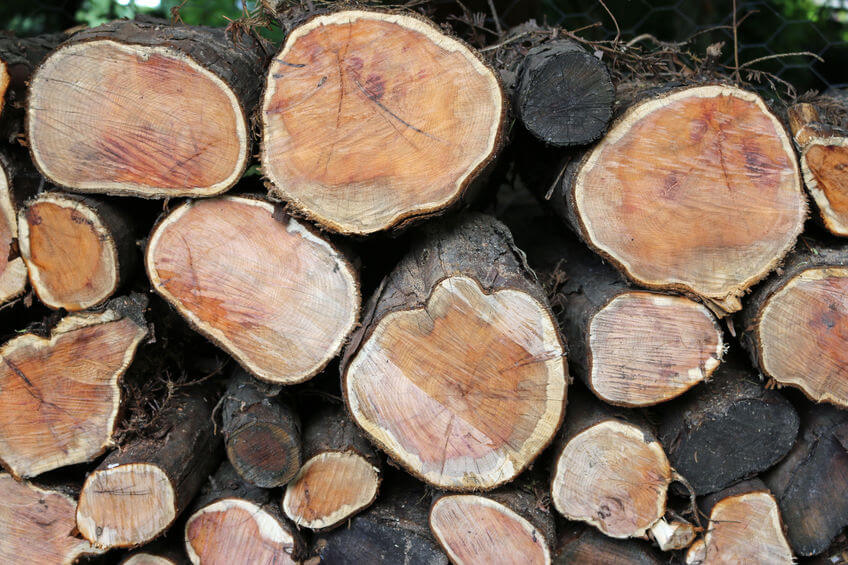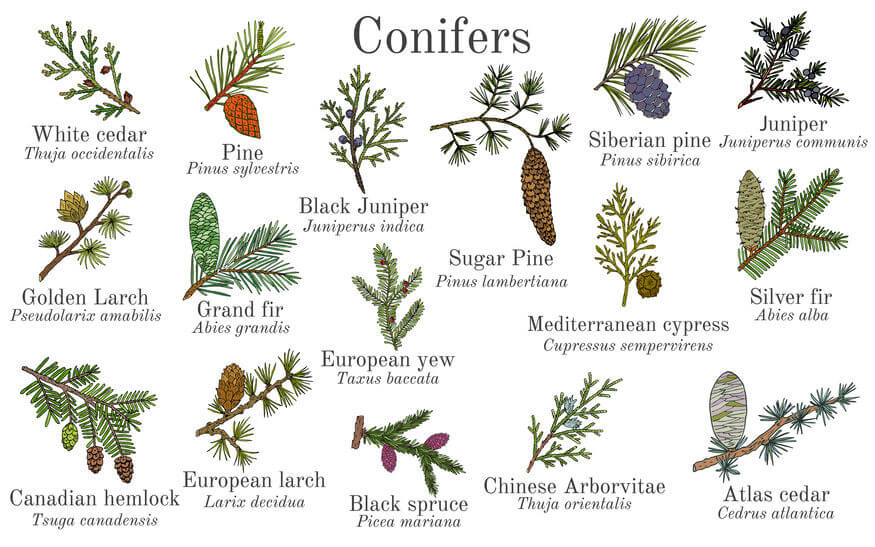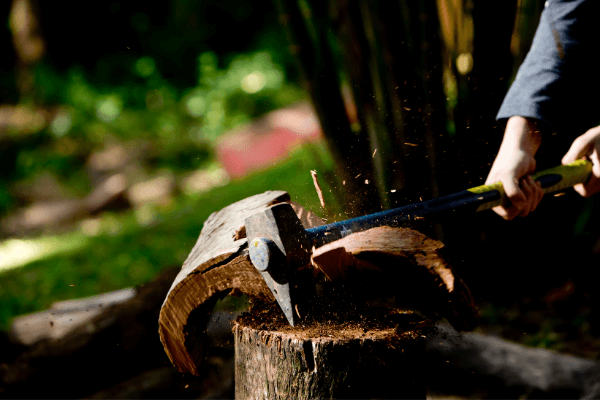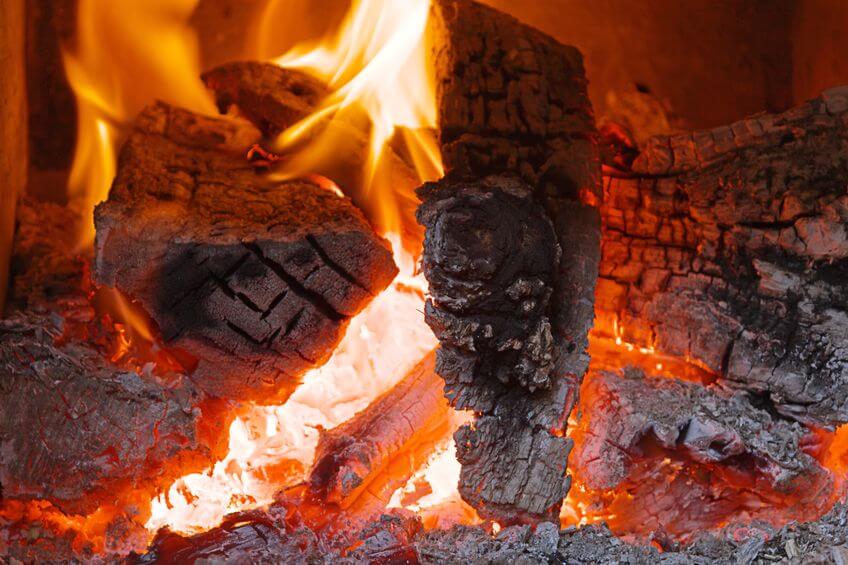- Home
- Firewood Types
- Yew Firewood
Yew Firewood
This post may contain affiliate links so I earn a commission.
Although it might not be as common as other types of firewood, yew firewood can be burned in your fireplace or wood stove.
But should it be?
In this guide, we’ll tell you everything you need to know about burning yew.
Can You Use Yew As Firewood?
The short answer?
Yes, you can.
However, yew is not a common firewood species because it is uncommon in most areas.
A relatively rare, slow-growing tree, it is historically valued and is therefore not often used for firewood.
In fact, some of the oldest yew trees are hundreds of years old.
In the past, yew was used for making longbows, since the dark, dense heartwood was strong when compressed while the lighter sapwood could stretch and bend beneath tension.
 Yew Logs
Yew LogsIn the United States and Great Britain though, yew trees were systematically killed because they were detrimental to agriculture.
Yew in all its forms (and all of its various parts) are poisonous and known to kill cattle.
Therefore, farmers actively worked to clear yew from their fields.
In Britain, you’ll still find yew growing around churchyards, which were surrounded by stone walls.
These were protected from cattle so the yew could be left to grow.
Today, yew is rarely used in bow making.
However, it contains certain chemicals that are prized in the research of heart medication.
You’re unlikely to find it growing in most places, but if you do happen to have some, there’s no reason not to use it.
What Is Yew?
There are several types of yew to be aware of.
For the most part, they function the same when it comes to firewood and burning.
One type is Pacific yew, Taxus brevifolia, also known as western yew. Naive to the Pacific Northwest, it is a small to medium sized evergreen tree.
It is slow growing and tends to rot from the inside, producing hollow forms.
There are several sub-varieties of this species, too.
This was the type of wood traditionally used by Native Americans to make paddles and bows for canoes.

European yew is another common type of yew.
This species is native to central, western, and southern Europe, as well as places like southwest Asia, northern Iran, and northwest Africa.
It is the tree that is originally known as yew and also goes by the names of common yew, European yew, and English yew.
This kind of yew is predominantly grown as an ornamental.
Both this tree and the Pacific yew are toxic and grow to roughly the same size.
It is used in several religious ceremonies as well as in woodworking and the production of longbows.
Yew has also been used in horticulture and to produce musical instruments.
Where To Find Yew Firewood
Depending on the exact species of yew you are after, you will likely be able to find yew firewood in most areas of the world.
It has a widespread distribution, although it is rare to find it available as firewood because of its slow-growing nature.
It’s also important to note that, in the United Kingdom yew is somewhat protected.
There is a conservation program in place to help protect endemic yew populations and to preserve them from forest fires and overgrazing.
Make sure your local regulations permit the burning of yew firewood.
There aren’t many in place in the United States, but it’s still worth doing some research to avoid potentially lofty fines.
Splitting Yew
As a hard, dense wood species, yew firewood splits relatively well.
Just look for wood with a relatively straight grain since pieces with small knots will be more difficult to split.

Yew tends to produce large tree trunks that are usually hollow.
Often, you’ll find that the wood is filled with knots, which unfortunately can make it somewhat challenging to work with at times.
How Well Does It Season?
As with all kinds of firewood, it’s important to allow your yew firewood plenty of time to season.
It’s hard and dense so, like oak firewood, you’re going to want to allow yourself lots of time to season your yew.
Cut and split it as early as possible.
Two years is recommended to get the highest-quality yew wood for burning.
Make sure you have it stored in a dry location and stacked properly so that it can receive proper airflow to lessen the drying time.
Burning Yew
Yew has a beautiful rich red color, producing dense logs that are heavy and even denser than oak.
You’ll need a good hot fire to get yew to start burning but once you do, you’ll get a long, slow burn that will last seemingly forever (or at least a couple of hours per log!).
They also produce a lot of heat, especially when larger pieces are left unsplit.
It’s a great firewood type for burning, as long as you don’t use it anywhere you plan to cook.
Yew doesn’t snap or crackle, producing very few sparks.

There’s not a lot of evidence that the wood itself produces toxic effects, even when burned.
The most poisonous parts of the plant include the bark, seeds, and leaves.
It’s a good wood for heating, so just make sure you don’t burn the bark or leaves and you should be good to go.
Seasoning your yew firewood should also make it safer to burn in your home.
In fact, some people report that yew not only produces a strong, intense heat, but that it gives off a pleasant scent.
Is Yew Firewood Worth It?
As a hardwood, yew can be difficult light, especially when starting a new fire.
You’ll want to make sure you have good kindling to get your fire started but once you do, yew will produce a slow-burning fire with an excellent heat output.
Just make sure you season it adequately before trying to burn it.
Poorly seasoned wood (or fresh green wood) can lead to creosote deposits that are not only difficult to clean, but potentially dangerous too.
Yew is not a common species that you will see sold and marketed as firewood.
However, if you’re lucky enough to have some yew firewood lying around, rest assured that it is perfectly safe (and beneficial) to burn.

About the Author
Obsessed with firewood, Nick is behind over 350+ of Firewood For Life's articles, as well as countless reviews, guides and YouTube videos to help readers like you reduce heating costs and create the perfect fire.


